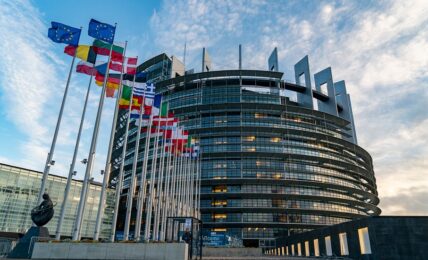As COP29 nations gather to discuss climate finance targets, they should know instinctively: You can’t invest in what you can’t measure.
By Shameek Ghosh, Co-Founder & CEO of TrusTrace
The world is one huge, interconnected, interdependent supply chain. And the race to decarbonize that supply chain is intensifying, as reports indicate the earth may already have warmed more than the target 1.5 degrees Celsius scientists have argued is a tipping point to avoid devastating impacts. That important effort will take large-scale investment throughout the global supply chain.
This month’s UN climate summit, COP29, held in Baku, Azerbaijan, has been called “The Finance COP.” Chief among its goals is to figure out how much money developed countries will invest in developing countries to, among other things, adopt clean energy solutions and remove carbon emissions from their part of the global chain — for themselves and for the rest of the world. Because as anyone who understands supply chains knows, emissions “downstream” become emissions “upstream.”
Less than a decade ago, it was thought, maybe, that investing $100 billion a year in developing countries’ sustainability aims would be adequate. Fast-forward to 2024, with its multiple hurricane disasters in the U.S.; devastating floods in Spain, Kenya, and elsewhere; cyclones affecting Bangladesh and West Bengal; wildfires across Canada; etc. and the urgency has been ratcheted up again. Now, it’s thought that annual investments of more like $1 trillion will be needed to help developing countries decarbonize.
Therefore in Baku, nations will seek a framework for such “green finance” — which countries will contribute what, which financial instruments will be used, how exactly the money will flow. And, as the World Resources Institute cites in its COP29 preview, “what reporting will be required to promote transparency.”
Because even if COP29 nations agree to extraordinary levels of green financing for the developing world, the next critical question will have to be, “How will they know if any of that investment is achieving its goals?” To begin formulating an answer, I humbly suggest looking at the changes underfoot in fashion, where supply chain traceability data plays an analogous role by shining a light on emissions to identify sustainable practices.
Traceability Through the Supply Chain
Fashion is a $1.7 trillion global industry. If fashion were a COP29 nation, it would be 12th largest in terms of GDP. It is also a significant carbon emitter, estimated to account for up to 10 percent of all global emissions. Many fashion companies and organizations — plus a growing number of legislative bodies — know this needs to change.
Like the overall global economy, fashion is characterized by a vast, interconnected supply chain, with brands at one end and tiers of suppliers at the other. The greatest challenge that brands face in their efforts to decarbonize is understanding the emissions of so-called tier 2, tier 3 and tier 4 suppliers (collectively, “deep tier” suppliers). Not only must they collect data about the places and plants where goods and materials are processed to know how sustainable their products are, they need such data if they themselves are to invest in greener supply chain operations.
That’s not easy and requires new traceability technology to begin connecting the dots. The fact is, roughly 90 percent of the data that fashion brands need to achieve their climate goals rests with deep-tier suppliers. And by some estimates, only about 3 percent of brands have visibility into that data — let alone know who all their deep-tier suppliers are. Notably, the majority of such suppliers are located in developing countries — many of the same nations that are the focus of COP29 green financing commitments.
Increasingly, fashion brands — and companies in other markets with intricate supply chains, such as electronics — have begun to adopt traceability platforms to support sustainability efforts and comply with new regulations. They use the platforms to map out their supplier networks and collect vast amounts of data, including carbon emissions. Luxury brand Kering, for example, publishes detailed datasets that underpin its Environmental Profit & Loss program, which measures the impact of its activities.
But equally importantly, brands are using traceability data to inform their own green investments. H&M Group, for example, has created a Sustainable Finance Framework to support projects that accrue to the company’s sustainability goals. And groups like the Apparel Impact Institute rely on data to achieve its aims of “identifying, funding, scaling, and measuring proven solutions and programs that decrease carbon emissions.”
This is the type of traceability that nations will need coming out of The Finance COP. Being based in Sweden, my company has seen first-hand the efforts by the Swedish International Development Cooperation Agency, for example, of tying investments to traceability data.
Ultimately, as Sweden is showing, such data will be critical to tracking COP29 participants’ journey to net-zero emissions. Because when it comes to the critical act of fighting climate change and investing in sustainability, only high-quality data can drive decisive action, unlock funding, and build stakeholder trust.
Shameek Ghosh is CEO and Co-Founder of TrusTrace, a leading platform for supply chain traceability within fashion and retail.



